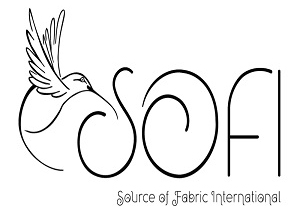For quilters looking to save money and stock up on beautiful fabrics, buying wholesale is a game-changer. It opens up a world of possibilities, allowing them to access high-quality materials at a fraction of the retail price. With the right approach, anyone can dive into the wholesale market and find the perfect fabrics to fuel their creative projects.
Understanding how to buy quilting fabric wholesale can seem daunting, but it’s easier than it looks. From selecting reliable suppliers to navigating bulk purchasing, this guide will provide essential tips and insights. Armed with this knowledge, quilters can transform their fabric stash while keeping their budgets in check. Whether they’re seasoned pros or just starting, the wholesale route offers a treasure trove of options waiting to be explored.
Understanding Wholesale Fabric Purchasing
Buying quilting fabric wholesale offers significant advantages. Recognizing the wholesale market gives quilters a chance to save money and broaden their options.
Benefits of Buying Wholesale
- Cost Savings: Buying fabric in bulk reduces the price per yard, resulting in substantial savings compared to retail prices.
- Variety: Wholesalers often carry a wide range of fabrics, including different colors and patterns, allowing quilters to select unique materials for projects.
- Quality: Many wholesalers provide high-quality fabrics that meet or exceed retail standards, ensuring that quilters receive durable and attractive options.
- Consistency: Buying wholesale fabrics typically ensures that fabrics come from the same dye lot, resulting in matching colors and patterns across different pieces.
Things to Consider Before Buying
- Minimum Order Requirements: Check the minimum number of yards or rolls required for bulk purchases, as some wholesalers enforce strict limits.
- Shipping Costs: Factor in shipping fees, as these can affect overall savings. Look for suppliers that offer free or discounted shipping for larger orders.
- Fabric Selection: Review the wholesaler’s inventory to ensure they carry the desired types of fabrics, whether that includes cotton, blends, or specialty materials.
- Supplier Reputation: Research reviews and ratings of suppliers. Trusted sellers often provide better customer service and quality products.
- Sample Availability: Request samples when possible. These allow quilters to assess the fabric’s texture and weight before making a large purchase.
- Return Policy: Understand the return policy of the wholesaler, as policies can vary. This knowledge is essential for handling any unsatisfactory purchases.
Where to Find Wholesale Quilting Fabric
Finding wholesale quilting fabric is straightforward. It involves checking online platforms and local suppliers that specialize in fabric.
Online Wholesale Suppliers
Online fabric wholesale suppliers offer a wide range of quilting fabrics. Websites like Fabric Wholesale Direct, BOLT Fabric Boutique, and Wholesale Fabric are good starting points. These sites provide extensive catalogs with various colors and patterns. They often feature bulk discounts and seasonal sales, making it easy to save money. Look for customer reviews to gauge the reliability of the supplier.
Local Fabric Wholesalers
Local fabric wholesalers present another option for buying quilting fabric. Stores like Joann Fabrics and local fabric shops frequently sell wholesale fabrics. Visiting in person provides an opportunity to see and feel the fabric before purchasing. Additionally, local wholesalers may offer unique fabrics not found online. Networking within quilting communities can help find reputable local suppliers that can fulfill bulk orders.
Tips for Buying Quilting Fabric Wholesale
Buying quilting fabric wholesale can be straightforward with the right steps. Below are key tips to help quilters make smart choices.
Checking Fabric Quality
Checking fabric quality is essential when purchasing wholesale fabrics. Look for materials that feel soft yet durable. Examine the print alignment and color consistency across swatches. Request samples whenever possible, as they provide a direct feel for the quality before committing to a larger order. Always consider the fabric’s weight and drape to ensure it meets project needs.
Understanding Pricing Structures
Understanding pricing structures helps quilters save money. Prices can vary based on several factors, including fabric type, order size, and supplier policies. Compare prices from multiple suppliers to find the best deals. Keep an eye on bulk discounts and shipping costs, as these can significantly influence total expenses. Additionally, inquire about any hidden fees to avoid surprises during payment.
Managing Your Purchase
Managing purchases wisely enhances the overall experience of Bolt of Fabric Wholesale. This includes keeping track of inventory and budgeting to ensure successful fabric acquisition.
Keeping Track of Inventory
Keeping track of inventory is crucial for quilters buying fabric in bulk. Quilters should maintain a detailed list of their existing fabrics, noting colors, patterns, and quantities. This practice prevents over-purchasing and helps in planning future projects. Regularly updating the inventory enables quilters to identify gaps in their fabric collection, making it easier to select new fabrics that complement their existing stock.
Budgeting for Fabric Purchases
Budgeting for fabric purchases helps manage expenses effectively. Quilters can start by setting a clear budget before shopping. This budget should account for not only the cost of the fabric but also shipping fees and any additional expenses like handling or taxes. Comparing prices from different suppliers ensures getting the best deals. Staying within the budget allows quilters to make thoughtful purchases, avoiding unnecessary debt while building a diverse fabric collection.
Conclusion
Buying quilting fabric wholesale opens up a world of possibilities for quilters looking to expand their collections while saving money. With the right approach and knowledge of the wholesale market, anyone can navigate the complexities of bulk purchasing. By focusing on quality, understanding pricing structures, and managing inventory effectively, quilters can make informed decisions that enhance their crafting experience.
Networking with fellow quilters and exploring both online and local suppliers can also lead to valuable resources and opportunities. Embracing these strategies ensures that every fabric purchase contributes to creating beautiful and unique quilting projects.
Frequently Asked Questions
What are the benefits of buying quilting fabric wholesale?
Buying quilting fabric wholesale allows quilters to save money by accessing bulk pricing, enjoy a wider variety of fabrics, and ensure high quality and consistency. This approach not only enhances fabric collections but also helps quilters budget effectively for their projects.
How can I find reliable wholesale fabric suppliers?
Quilters can find reliable wholesale fabric suppliers by exploring online platforms like Fabric Wholesale Direct and BOLT Fabric Boutique, as well as local suppliers such as Joann Fabrics. Networking within quilting communities can also lead to valuable recommendations for trustworthy suppliers.
What should I consider before purchasing wholesale fabric?
Before buying wholesale fabric, consider minimum order requirements, shipping costs, fabric quality, supplier reputation, sample availability, and return policies. These factors are critical to making informed decisions and ensuring a satisfactory purchasing experience.
How can I ensure the quality of wholesale fabric?
To ensure fabric quality, examine aspects like softness, durability, print alignment, and color consistency. Requesting samples before making larger orders is advisable to assess quality firsthand and confirm it meets your specific project needs.
What tips can help me manage my fabric purchases effectively?
To manage purchases effectively, keep a detailed inventory of existing fabrics to avoid over-purchasing, set a budget that includes all costs, and compare prices from different suppliers for the best deals. This approach helps quilters build their collections thoughtfully and avoid unnecessary debt.


